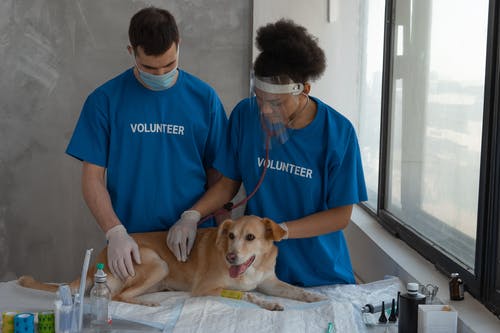Dental disease is prevalent in cats. By the age of four, gingivitis and periodontal disease affect the teeth of many cats. It is a serious, slowly developing, painful condition that damages general health and well-being. There will be no indication of oral discomfort in cats. As the pain associated with dental problems grows gradually, people learn to live with it. Therefore, all cats must see a veterinarian annually to evaluate their oral health.
What are the most prevalent dental problems among felines?
The following are the most common dental problems among cats.
Periodontal Disease
The gum tissue is infected and inflamed by periodontal disease. The lack of comprehensive dental care for your pet results in plaque accumulation at and below the gum line. This illness caused inflammation of the bone, tooth-anchoring ligaments, and gums. By eroding supporting tissues, periodontal disease can lead to tooth loss if left untreated. The periodontal disorders gingivitis and periodontitis are gingivitis and periodontitis, respectively. Dental cleanings performed by veterinarians treat gingivitis and periodontitis requires anesthetic. A tooth may appear better without anesthesia, but plaque lingers beneath the gum line.
Gingivitis
Gingivitis is driven by inflammation of the gums, not the ligaments or bones. The gums change color from coral pink to crimson or violet and expand. Gums are prone to bleed easily. Typical foul breath Gingivitis can be cured with a thorough dental cleaning, but it can progress to periodontitis if left untreated. Some cats aged 6 to 8 months acquire gingivitis. Typical symptoms include puffy gums and bad breath.
Gingivitis can be treated by anesthesia-assisted professional teeth cleaning from an animal hopsital for your dog and cat. If gingivitis persists, your cat may require a more thorough cleaning. Following dental cleanings, your veterinarian may seal the teeth to prevent bacterial accumulation and promote healing. Check unresponsive cats for immune system problems, diabetes, and feline Bartonella infection (cat scratch fever). If the teeth are not maintained clean and free of plaque, gingivitis will return.
Periodontitis
In periodontitis, the damage is done to the gums, ligaments, and bones. Typically, plaque, tartar, and gingivitis precede them. It results in irreversible tooth loss. This condition can manifest in cats a year old.
The treatment for periodontitis is a thorough cleaning above and below the gum line under anesthetic. Jaw X-rays can detect bone loss. Periodontitis necessitates more extensive treatment than gingivitis, and additional treatments may be necessary for gum disease. Extractions are widespread. Cats do well without teeth because they can regenerate tissue. To clean the surface of the root, surgery may be required. Lastly, veterinarians treat tooth crowding and underlying diseases that contribute to periodontitis. Visit this link if you believe your pet is in need of surgery.
If your cat has periodontitis, continue to practice at-home oral hygiene. Follow your veterinarian’s instructions regarding brushing, dietary changes, plaque prevention gel, and oral rinses. Frequent preventive cleanings (3 months to 1 year) prevent recurrence and bone loss.
Plaque
Plaque is a thin layer of food debris, bacteria, saliva, and dead cells that form on your pet’s teeth. Plaque that has stood on the teeth for more than 72 hours becomes tartar. This results in gum inflammation and illness.
To Sum It Up
Clean teeth are rarely affected by gum disease. Regular dental examinations and at-home practices such as brushing can aid in the prevention of gum disease. The daily brushing of a cat’s teeth. Plaque left for longer than three days transforms into calculus, which cannot be removed with a toothbrush. If you cannot brush your cat’s teeth, wipe them with gauze every two to three days. Ask your veterinarian for suggestions on plaque-removal treats and dry food. Your vet may apply a barrier sealant or plaque-prevention gel.







